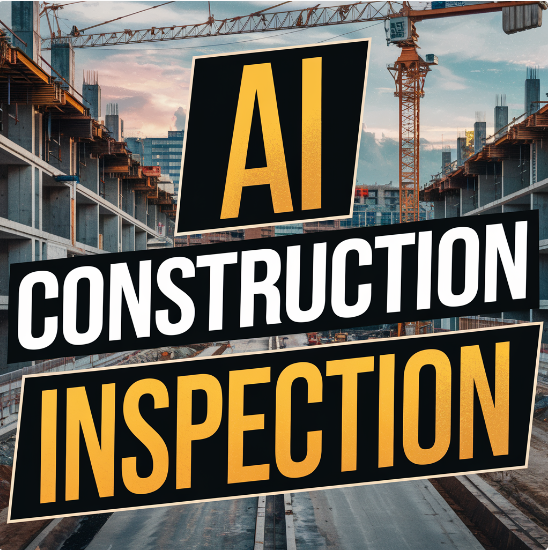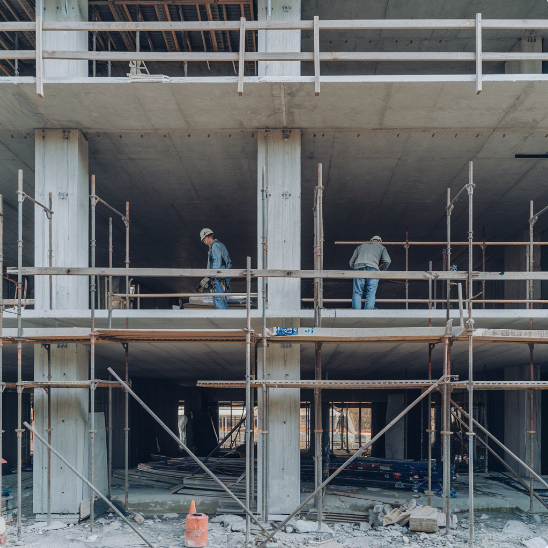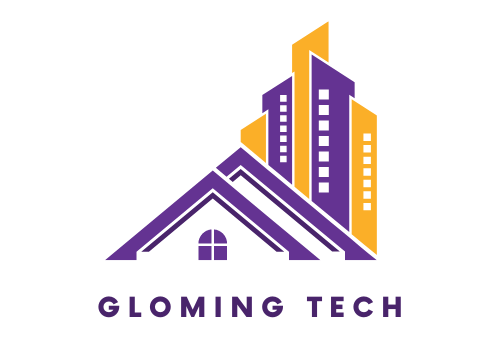Introduction: Ai Construction Inspection

The landscape of construction inspection is changing for the better with the incorporation of getting inspections done faster and easier. The effectiveness of AI algorithms like computer vision and machine learning enables the system to conduct photo and video as well as live data examination to look for faults, incidence risks and construction faults quicker than other means. It assists in constant over-sight of the work underway and conformity with quality measures therefore cutting down on blunders. Artificial inspection tools also come in handy in mapping out areas within a project that require enhancements in efficiency and safety. Such model speeds up the process of inspection undertaking and enhances the quality of the project hence avoids expensive stoppage and repeat of activities formulated from construction errors within schedules.
The Rise of AI in Construction
The construction industry has experienced the revolutions in understanding thanks to the AI progress. This can be seen through the transformation of the planning, execution and inspection of construction projects through the use of predictive analytics and automated machinery. The application of AI in construction site inspection cannot be overlooked, as it helps in solving some of the most difficult problems faced by the industry, namely human errors, lack of time and risk of accidents.
What is AI Construction Inspection?
Construction inspection software processes construction field issues leveraging machine learning algorithms to assess and track construction activities and sites. There are possibilities to verify or suggest solutions during the performance of a diagnostic and also prevent similar occurrences from reoccurring in the future. The technology usually involves drones, sensors and computer images for the collection of information, in order to make the inspections more detailed and less time-consuming.
Benefits of AI Construction Inspection

Enhanced Accuracy
An astounding benefit of utilizing AI in construction inspection is superior accuracy. In manual inspections, there is always a huge risk of human error, but in AI systems, even complicated data can be processed, and problems accurately pinpointed. Thus, not a single detail is overlooked ensuring better quality of work with fewer expensive errors.
Time Efficiency
Through the use of AI, it is easier and quicker to inspect soft copies than it is to conduct visual inspections manually. Modern technologies, such as drones and sensors, are very effective in surveying vast areas in a short time span, and analysis of data can be done as it is received by machine learning algorithms. This cuts down the duration which would have been set aside for such inspections and thus enhances the pace of completion of the project.
Improved Safety
Safety is always a major issue in the construction industry. The risks that may exist may easily be avoided and therefore will less likely turn into major threats with the help of AI tools. For example, AI can also be used to identify underperformance of the excess structural loading which is leading to dangerous working environments and thus interventions can be made.
How AI Construction Inspection Works
Data Collection
The first stage of carrying out AI construction inspection is data collection. Purpose-built drones with high-resolution cameras and sensors are deployed on the air over the construction site collecting the images and data. Other than that, ground-based sensors and IoT devices also add to the data pool.
Data Analysis
Data collection is usually the first step, and later this data is used in a machine learning system to find patterns and anomalies. Such algorithms are able to detect defects such as cracks, misalignments, and other defects which the human eye would be unable to notice.
Reporting and Action
Following the data analysis, the AI system creates comprehensive reports bringing any problem raised into attention. And these reports are not just about problems, they also give recommendations on what should be done, which is important for the project completion duration, as well as quality assurance.
Real-World Applications of AI Construction Inspection

Case Study 1: High-Rise Buildings
AI systems that routinely supervise the safety and health physically speaking of the building’s structures are also on board in the development of high rise buildings. Drones are flying, allowing the building and photography with images being analyzed for possible structural defects. This has greatly reduced the prospect of structural failure and also enhanced safety.
Case Study 2: Bridge Construction
AI has also been used in the construction of bridges. As the bridge is being constructed, its internal structure is equipped with stress monitoring devices while drones are utilized to perform external inspections. There is an analysis of the collected data to foresee disasters hence maintenance could be done before a machine goes down, and the effective time lost is minimal.
Case Study 3: Road Construction
Similarly, while constructing roads, AI systems are on the surface evenness and quality of materials Another means used is ventilation duct encapsulation. Drones shoot pictures and sensors are used to check on the depth and material used in the asphalt cover. It is then surveillanced for any less than standard protrude variations so as to promote road quality impression.
The Future of AI in Construction Inspection
Predictive Maintenance
Predictive, care-for-the-building aggregate that could probably prove to be the most cognitive technology in drawing construction inspections, is predictive maintenance. Data stored can be used to make guesses as to the problem areas, time, and anticipation, and thus take preventative measures. This is beneficial since it avoids consequences caused by problems and therefore saves money.
Integration with BIM
Another area where AI can help construction activities is Building Information Modeling (BIM). Managers include real-time updates in their decision-making process by exploring an integrated AI and BIM platform. This in turn results in better and quality decisions concerning the project at hand.
Autonomous Inspections
In the future, there may be ideal Inspection Systems embedded in drones and robots, where Inspection Systems can operate without the human element being involved and Engineers will be monitoring the construction project all day every day. Such systems will be beneficial since they will be always on duty and thus always monitoring and are in a position to detect problems as they occur.
Challenges and Considerations

Data Privacy
In the process of performing AI construction inspection, there is a thorough collection of information which raises the ethical issue of data privacy. It is important to guarantee the people’s interests in the appropriate carrying out of such processes by explaining issues such as safety of the data.
Initial Costs
Attaching and deploying AI systems is not cheap once you look at the expenses the company or organization will incur. On the other hand, the gains that come in terms of quality of work done and the costs incurred in inspections prevail over the costs incurred at that moment.
Training and Adaptation
If the use of AI construction inspection is to be successful, then personnel must be trained to utilize these advanced systems. This comprises ideas of how to use drones, how to read the findings diagnosed by AI, and how to put into effect the suggestions made.
FAQs: Ai Construction Inspection
What are some ways in which AI participates in the construction inspection processes?
AI enhances construction inspection by performing defect and inconsistency detection as well as risk assessment through computer vision and drone surveillance assisted with ML algorithms. It utilizes images, videos, and sensor data to identify problems promptly, thereby increasing the efficiency of such inspections.
Are there any activities concerning the application of AI for safety issues where accidents can be of considerable concern?
Yes, AI can be used to pinpoint the safety issue’s risk factor through construction site visual and sensor analytics. The technology is capable of assessing dangers such as structural impairment, malfunction of operations, and breach of safety regulations and enabling teams to contain the threats.
What data does AI portray to inspect and carry on with construction?
AI can perform construction inspections with various data input such as images or videos from drones or cameras, sensor data from IOT devices, and BIM data as well. With these inputs, it becomes easier for artificial intelligence to carry out thorough and precise inspection.
To what extent do you think AI is effective in conducting defect detection during the construction inspection process?
AI is reliable especially if sufficient and quality training data is provided. In cases of cracks, material decay, and non-compliance with drawing features, the AI system is more accurate compared to human inspectors but most AI systems still rely on human intelligence for complex decision-making processes.
What are the fundamentals of harnessing the power of AI in construction inspections?
AI technology shortens inspection time, provides elevated levels of accuracy, improves safety by identifying possible dangers at an early stage, and lessens the reliance on human resources. It also offers standard reporting that is in real time which helps in quick and easy management of the project.

Conclusion: Ai Construction Inspection
The construction industry has witnessed adoption of technology, with AI construction inspection taking center stage due to improved accuracy, enhanced safety, and saved time. The scope is as broad as construction of skyscrapers and even roads. Also, some barriers include: privacy of data and first time investment but using such tools will be beneficial in the future for the construction projects hence AI is here to stay.
As a next step, those keen on going deeper into how AI can be further utilized in the field of construction inspection, I suggest getting in contact with the representatives of the construction industry, or participating in targeted workshops. The next revolution in construction methods has arrived, courtesy of utilizing AI.
Why wait any longer to start implementing AI to your construction projects? The state of construction inspection has transformed forever since it is not only about detecting problems anymore.
